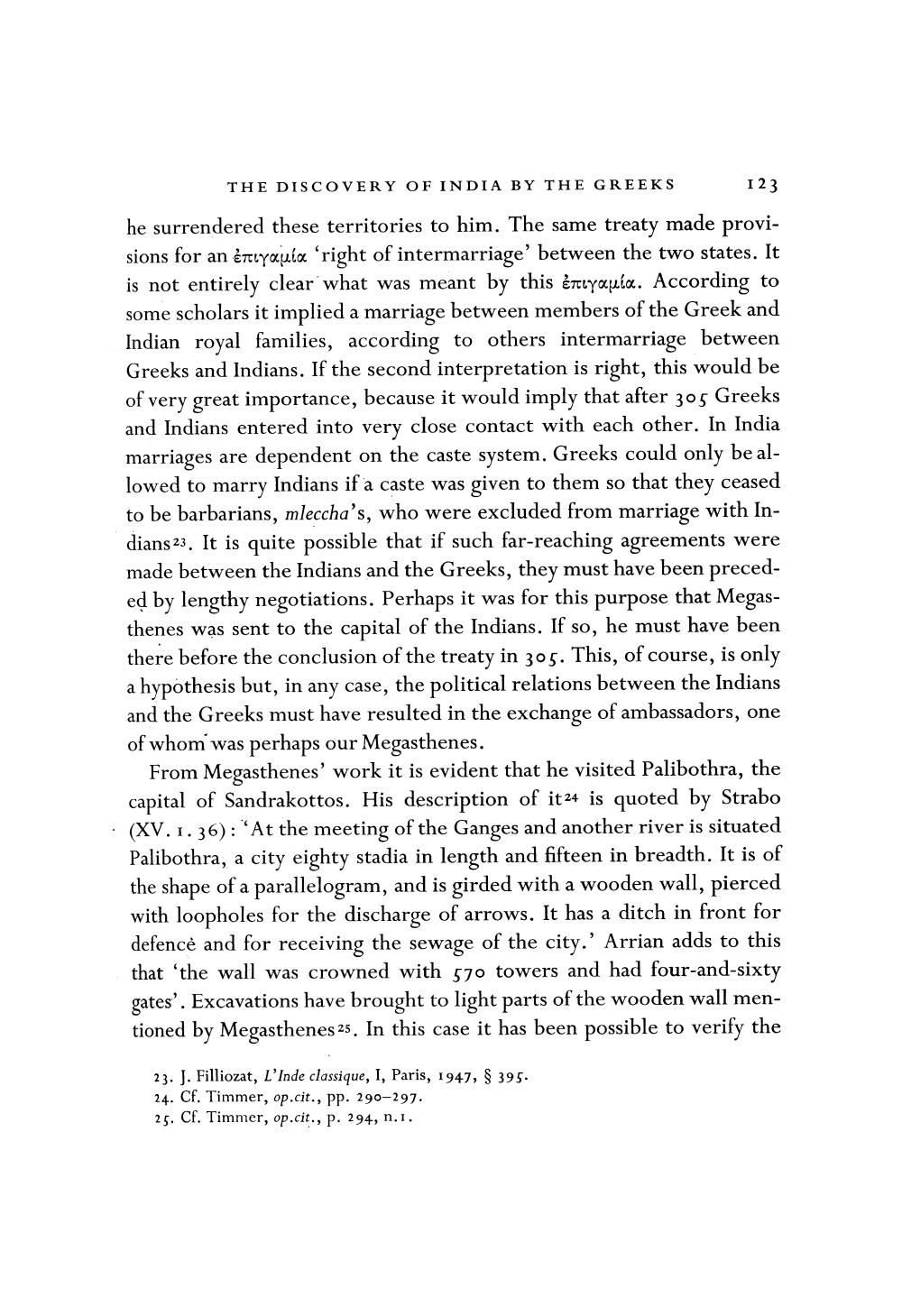Book Title: Discovery Of India By Greeks Author(s): J W De Jong Publisher: J W De Jong View full book textPage 9
________________ THE DISCOVERY OF INDIA BY THE GREEKS 123 he surrendered these territories to him. The same treaty made provisions for an entlyouía ‘right of intermarriage' between the two states. It is not entirely clear what was meant by this entlyouía. According to some scholars it implied a marriage between members of the Greek and Indian royal families, according to others intermarriage between Greeks and Indians. If the second interpretation is right, this would be of very great importance, because it would imply that after 305 Greeks and Indians entered into very close contact with each other. In India marriages are dependent on the caste system. Greeks could only be allowed to marry Indians if a caste was given to them so that they ceased to be barbarians, mleccha's, who were excluded from marriage with Indians 23. It is quite possible that if such far-reaching agreements were made between the Indians and the Greeks, they must have been preceded by lengthy negotiations. Perhaps it was for this purpose that Megasthenes was sent to the capital of the Indians. If so, he must have been there before the conclusion of the treaty in 305. This, of course, is only a hypothesis but, in any case, the political relations between the Indians and the Greeks must have resulted in the exchange of ambassadors, one of whom was perhaps our Megasthenes. From Megasthenes' work it is evident that he visited Palibothra, the capital of Sandrakottos. His description of it24 is quoted by Strabo • (XV.1.36): At the meeting of the Ganges and another river is situated Palibothra, a city eighty stadia in length and fifteen in breadth. It is of the shape of a parallelogram, and is girded with a wooden wall, pierced with loopholes for the discharge of arrows. It has a ditch in front for defence and for receiving the sewage of the city.' Arrian adds to this that 'the wall was crowned with 570 towers and had four-and-sixty gates'. Excavations have brought to light parts of the wooden wall mentioned by Megasthenes 25. In this case it has been possible to verify the 23. J. Filliozat, L'Inde classique, I, Paris, 1947, § 395. 24. Cf. Timmer, op.cit., pp. 290-297. 25. Cf. Timmer, op.cit., p. 294, n.1.Page Navigation
1 ... 7 8 9 10 11 12 13 14 15 16 17 18 19 20 21 22 23 24 25 26 27 28
